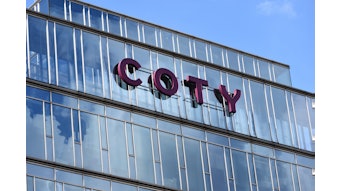- From a branding perspective, the quality of messaging in the age of the Internet has decreased and communications have become more cluttered than ever.
- Once the fast-paced Web audience determines a brand communication through social media is salesy or boring, it will inevitably and quickly lose interest.
- Social media has affected consumers’ interaction with the brand—demonstrated through both purchasing and feedback to the brand direction in general.
- In the Web world, statistics and trends are always changing, so it is critical to revisit consumer and brand research frequently.
As a designer trained before the computer and Internet were unavoidable, I have seen the evolution in how technology affects branding first-hand. Depending on how you look at it, both the good and the bad are this: technology has empowered the individual. Before the technology we take for granted, people had to hire a professional photographer just to take their family portrait. Copy had to be hand set by a professional typesetter before a simple poster or flyer could be printed. Publishing an article was impossible unless you were a trained reporter who was vetted by a newspaper editor. But with the rapid rate of technological advancement, all this has changed. The Web has bred a do-it-yourself culture, which is incredibly empowering for the individual or the small-business owner but can also be very dangerous. With the advent of the personal computer and Internet, from a branding perspective, the quality of messaging has decreased and communications have become more cluttered than ever. This idea is now being further amplified by the recent boom in the popularity of social and digital media.
But it’s not all bad news. Most companies, especially larger ones where the stakes are high, see the value in treating digital media with the same care as traditional media—and there is a lot of creativity and innovation in this area. Large companies are either hiring creative agencies with expertise in the area or are establishing in-house departments with social media ambassadors. With the help of agencies, companies are now even launching campaigns exclusively on social media—note Burger King’s “kill a friend” campaign on Facebook or Kraft’s use of Twitter in the launch of DiGiorno Flatbread Pizza. But the reason these campaigns have been successful is not just because they are simply on these popular portals—it is how brands are using and executing the campaigns.
The Dangers of Do-it-yourself Branding
Through technology, individuals have become empowered to be their own photographer, designer, printer, real estate agent and even medical professional—physicians have even reported people self-diagnosing themselves through sites such as WebMD. Most savvy people understand that the Web is simply a tool for research, and that treatment should be left to the professional … so why is branding any different? Just like in medicine, if the incorrect diagnosis is made, the result can be disastrous.
The same principle applies to digital media. While it makes sense for individuals to be responsible for their own personal brands, a company is much more complex. Unless you have a solid understanding of the art of branding, you can unwittingly damage your brand very quickly without even knowing it. Branding for digital media is tricky; if not done correctly, it can come off as “salesy” or boring. Once the fast-paced Web audience determines you are either one of these, it will inevitably lose interest.
The Power of Social Media
Branding is simply the public’s perception of a product, service, company or even an individual. Before social media, only celebrities had a public image that was carefully controlled through publicists. Now, everyday people are responsible for branding themselves online with the way they portray themselves on social media. It is no surprise that Twitter is highly successful with celebrities—it gives them a forum for communicating to their fans directly, with the ability to debunk rumors started by tabloids. With the help of social media, everyday people are becoming brands online. Employers are also using social networking sites such as Facebook and MySpace to vet potential employees.
For small- to mid-sized companies, social media can be a cost-effective way to reach their market directly, and can be an incredibly efficient alternative to expensive TV or print advertising. In fact, the trend toward digital marketing has picked up speed with the economic downturn—when less overall advertising dollars are being spent. Social media has affected consumers’ interaction with the brand—not just on the purchasing side, but with feedback to the brand direction in general. For a brand or company, digital media can be more important for public perception than traditional media because the Web is viral in nature and messaging can spread very quickly. If the wrong message is put out there, it may be too late to correct.
A recent example of this principle is the Tropicana packaging debacle that happened in early 2009. Tropicana’s rebrand, spearheaded by ad giant Arnell Group (which also did Pepsi’s recent face-lift), had all the pieces in place for success. Most projects that come out of reputable agencies for large clients have comprehensive strategy, a long design process and thorough focus group testing before the product hits the shelf. But in the case of Tropicana, once the new packaging was launched, the audience revolted—online. Consumers thought the new brand was shallow and generic, and missed the iconic orange in straw graphic that has been a staple of Tropicana’s packaging for so many years. They showed their distaste through launching Facebook pages and writing blog stories dedicated to slamming the new packaging, and PepsiCo took note by promptly pulling the new cartons from the shelves.
Tips for Successful Digital Marketing
Digital marketing is still a very new discipline, and navigating this world can be overwhelming for brand owners. Not only does it entail staying current on trends on the product development and consumer side, but it also requires awareness of new technologies and platforms. However, there are some safeguards that can be put in place that can minimize the risk for brands in this new frontier.
Define Your Strategy
Simply getting a page up on Facebook or Twitter is not an effective digital media strategy. Just like with traditional branding, your digital marketing campaign must begin with research. If you have already defined your consumers and studied their mind-set through traditional research, you will want to know where they exist and what compels them in the digital landscape. And in the current Web world, statistics and trends are always changing, so it is critical to revisit your research frequently. If your target market is not on Twitter, why should you be?
It is also important to map out what type of communication should be on each portal to avoid redundancy. Many consumers will be following your brand on multiple portals, so it is critical to keep them engaged on many different levels. Consumers are more empowered than ever, and are turning to online content to make purchase decisions. Depending on budget, an expert can help you to best allocate your resources to maximize the effectiveness of your digital marketing campaign.
Define Your Goals
When embarking on a digital marketing campaign, strategies are very different if your goal is a) to obtain visibility of your brand; b) to launch a specific product; or c) to focus on online sales. For example, a blog is a great way for your customers to get a sense of your corporate culture because blogging is a more relaxed and free-form medium than a traditional Web site, while Twitter can be a great forum for answering specific consumer questions publicly. Defining and mapping out your goals can save you a lot of time and keep your efforts focused.
Create Relevant Content
To execute a successful digital marketing campaign, it is critical to create quality content that your audience will want to see. If your content comes off as a direct sales pitch in these mediums, the savvy Web audience will be turned off. The key to successful digital marketing is engagement. If your audience is commenting on your posts, interacting with your pages and blogging or re-posting your content, you know you are doing something right.
Maintenance is Everything
In today’s Web world, immediacy is essential. News is already old by the time it hits newspapers or television. If your content does not have substance or is not updated frequently, the Web audience will lose interest quickly. Being topical and current with your branded content can make the difference between a compelling campaign and a mediocre one.
Hire an Expert
There are many firms that specialize in digital marketing, but the key is to find one that also has a comprehensive understanding of branding as a whole. Since one of most important elements of branding for digital media is consistency in your brand’s voice, it is critical that the people in charge of your brand online have a strong background in traditional brand development. In addition to having an understanding of technology, a successful digital media team must also have quality visual aesthetic and strong communications skills. Since individuals within an organization may have very unique voices, it is impor- tant to have an expert to act as an editor to filter the messages and translate the tone into a consistent brand voice in order for branding efforts to be successful—regardless whether this is an outside agency or a qualified individual within your organization. If you have a team of people handling your digital marketing in-house, make sure its background deems it to be an expert on branding, and that it is current on digital media technologies. Experts can design and execute custom, branded pages within the “free” systems, create targeted networks and friend adds, create custom and meaningful content, and ultimately convert sales.
Aniko Hill is the founder and creative director of The Kitchen Collaborative, a boutique branding agency that works to create premium lifestyle brands. She has worked on branding projects for Boeing, Disney, Master Foods, Sony, Ketel One Vodka and Red Bull, and has taught advanced courses on branding and packaging design at The Art Institute of California. In 2008, Graphic Design USA recognized Hill as one of its People to Watch.










